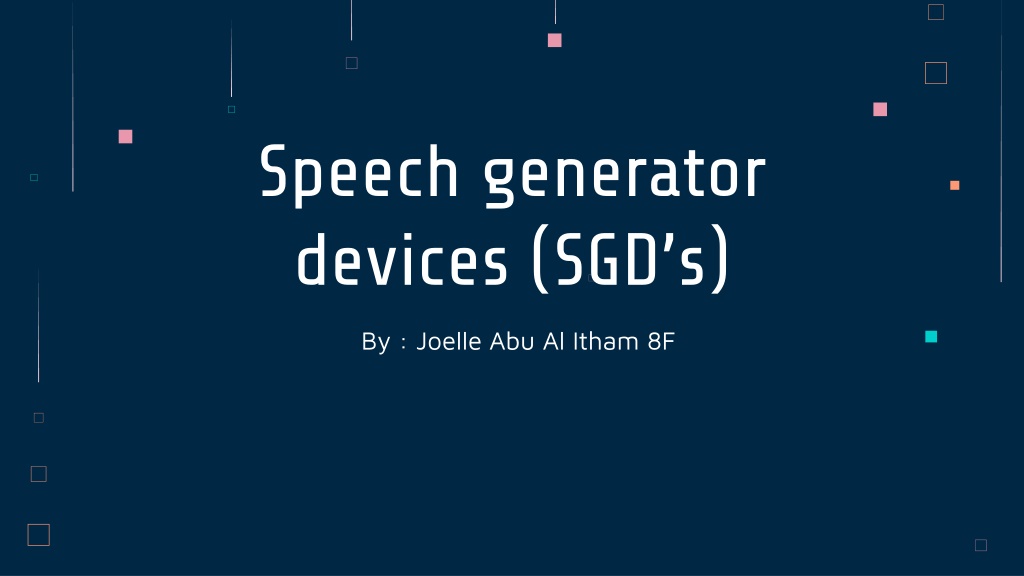
Understanding Speech Generating Devices (SGDs)
Discover the world of Speech Generating Devices (SGDs) and how they offer a voice to those who are unable to speak. Learn about the different types, advantages, disadvantages, and why these devices are crucial for communication. Explore the features, usage, and importance of SGDs in enhancing communication skills for individuals with speech impairments.
Download Presentation

Please find below an Image/Link to download the presentation.
The content on the website is provided AS IS for your information and personal use only. It may not be sold, licensed, or shared on other websites without obtaining consent from the author. If you encounter any issues during the download, it is possible that the publisher has removed the file from their server.
You are allowed to download the files provided on this website for personal or commercial use, subject to the condition that they are used lawfully. All files are the property of their respective owners.
The content on the website is provided AS IS for your information and personal use only. It may not be sold, licensed, or shared on other websites without obtaining consent from the author.
E N D
Presentation Transcript
Speech generator devices (SGD s) By : Joelle Abu Al Itham 8F
What Are Speech-Generator Devices(SGD)? Computer-based systems called speech-generating devices give those who are unable to speak an electronic voice. These systems are also referred to as augmentative and alternative communication devices. These can be accessible using different-sized keypads, optical pointers, or single-switch scanning techniques. SGDs are primarily tablet-like devices that enable a person who is unable to talk to express thoughts through artificial voice generation. Many people would be alone and awake without an SGD, which is highly individualized and specially programmed, locked inside a body they are unable to control, and without the capacity to speak.
How Are Speech-Generator Devices used? Single-level Devices. The pictures/ words on the display may be changed, to suit the vocabulary programmed into the device. Static devices. The display is fixed and unchanging. Typically, with these Speech Generating Devices, one key corresponds to one symbol. To create a message, the communicator can choose which keys to press. Dynamic devices. Users compose messages which can be single words, phrases, or sentences by navigating these pages. They might also work with different switch access systems.
Advantages of SGDS 1. Affordable Media Production 2. Instant Brand Recognition Across Digital Channels 3. Better Outcomes for Corporate Learning Programs 4. Consistent Brand Engagements 5. Stronger Internal Communication 6. More Personalized Interactions 7. Try different voices
Disadvantages of SGDS 1. The system is very time consuming as it requires huge databases and hard-coding of combination to form these words 2. multiple speakers may degrade results. 3. Despite large improvements, Speech Synthesis can still sound a little unnatural. 4. considerable resources in terms of data storage and processing power.
Why Use a Speech-generating Device? 1. It allow people who can't use spoken language to 'speak 2. Speech-generating devices let people speak words and sentences electronically. 3. Speech-generating devices have been used to help autistic children communicate.
the features of the SGD are: A more robust language system More flexible software More durable construction A larger screen size Alternative access options Establishing operations.
Links: https://www.prentrom.com/caregivers/speech-generating-devices-sgds https://raisingchildren.net.au/autism/therapies-guide/speech-generating- devices https://www.sciencedirect.com/topics/medicine-and-dentistry/speech- generating-device
